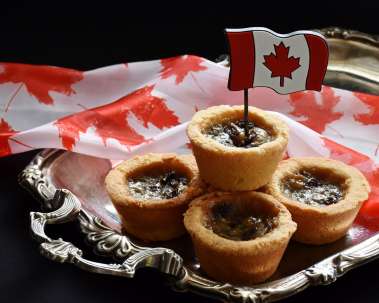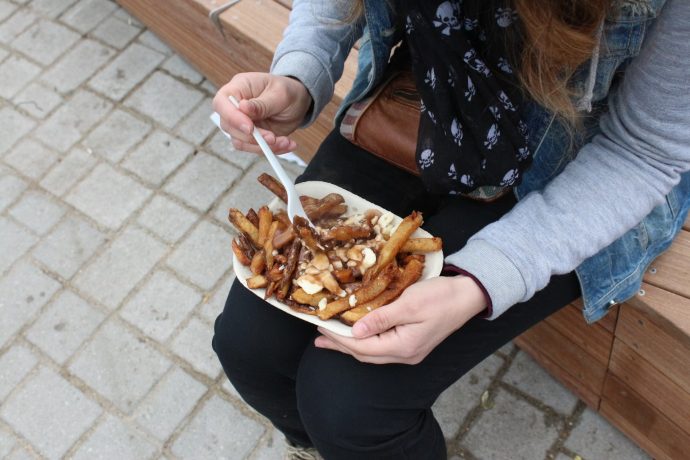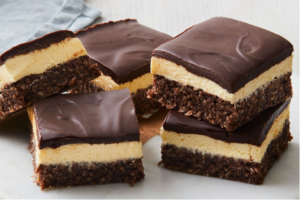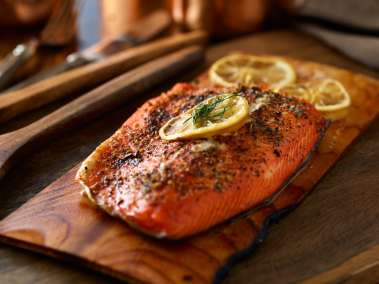Enter your email below to receive weekly updates from the Ashton College blog straight to your inbox.

Poutine is a comfort food that originated in rural Quebec back in the 1950s. There are different claims linked to the invention of this dish, but its exact origin is not known. The name “poutine” is thought to be a slang word for “mess,” and this describes the ingredients of this dish because it is a combination of crispy French fries, cheese curds, and rich gravy. The most popular story says that poutine started at a restaurant called Le Lutin qui rit in 1957, when a customer asked the owner to mix cheese curds with fries.
There are many popular variations of the original poutine recipe, leading some to believe that poutine has become its own category of food across Canada. The ingredients and texture could also change across the provinces. Different variations of poutines include Pulled Pork Poutine, Vegetarian Poutine, Breakfast Poutine, and many more. Poutine has indeed become a symbol of Canadian culture.

This is an incredibly famous dessert in Canada, especially during Christmas time. There are several types of stories that are linked to the history of Nanaimo Bars. Some people say that families were sending Nanaimo bars on sailing ships from England to Nanaimo while others say it was a dessert in the lunchboxes of the people working in mines because Nanaimo was discovered on coal. Although the stories vary but the earliest known recipe for Nanaimo bars was published in the 1952 Women’s Auxiliary of the Nanaimo Hospital Cookbook under the name “chocolate square.” In 1953, a similar recipe appeared in Vancouver’s Edith Adams’ Cookbook, which was called “Nanaimo Bar.”
This is made in large slabs and later cut into small squares as bars. It contains smooth vanilla icing between a crunchy, cakey base and a chocolate ganache top. This no-bake dessert features three layers, starting with a base made of chopped walnuts, coconut, cocoa, and graham crumbs. This type of base is common in various cookie recipes across Commonwealth countries like Canada, the UK, and New Zealand.


Salmon holds a special place in the culinary traditions of the First Nations Peoples. The practice of cooking fish on a wood plank, particularly using Western Red Cedar, was developed centuries ago by Native Americans. This unique method cooks the fish with a rich, smoky flavour and also preserves its moist, tender texture. Salmon is a very good food for mental health, and it has high quality proteins and vitamins including Omega-3 fatty acids.
This fish specialty is popular in both Canada and the USA, particularly in British Columbia and the Pacific Northwest region. Typically, the salmon is marinated in oil, seasonings, and fresh aromatic herbs before being cooked, creating a flavourful dish.
Ingredients
West Coast Salmon filets (with skin on)
¼ ounce fresh dill (3-4 sprigs)
1 cup Kosher salt
¼ tsp coarse peppercorns
½ cup maple syrup
1 large cedar plank, for grilling salmon (food-safe)
Directions
Method
Soak two 4-by-8-inch thin cedar planks (or one large enough to fit the 4 fillets) in water for several hours. You can add herbs and citrus to the water for extra flavor if desired.
In a medium bowl, mix the brown sugar and salt with ½ cup water until dissolved. Rub this brine on both sides of each salmon fillet. Place the salmon in front of a fan or allow it to air-dry until the brine feels tacky, about 2 hours. Rinse the fillets quickly to remove most of the brine and pat dry.
Preheat the oven to 350ºF. Place the salmon fillets skin side down on the cedar planks. Cook in the oven for 10 to 12 minutes, until just barely done (the fish should still be slightly translucent in the center). Serve on the planks.
Enjoy Canada Day with this traditional dish!

View All Comments